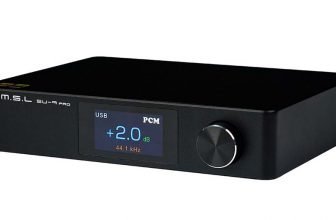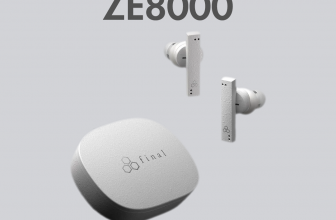Today we’ll be going over ThieAudio’s Wraith, a relatively new over-ear, open-back release from the company. When I think of ThieAudio, it’s not over-ear headphones that come to mind, but rather their bedazzling, sparkly IEMs (a few of which are some of my favorites). This is my first time trying anything over-ear from ThieAudio, but going by my good experiences with the company and the Wraith’s promising technical design, I have a good feeling going into this review. Let’s see if my gut is right.
What’s in The Box?
- ThieAudio Wraith Over-ear Open-Back Planar Headphones
- Headphone Cable with 4.4mm Balanaced Jack
Look and Feel
The Wraith is certainly a cool looking headphone, pulling off a look that’s equal parts chic and industrial. Its most apparent physical trait is its sturdy metallic build. This may put ThieAudio’s Wraith on the heavier side of things at 450 grams, but undeniably makes it very sturdy and durable. Both headbands are have stitched borders and are made of a smooth, seemingly durable synthetic leather. The thick earpads are made of memory foam encased in what ThieAudio calls Microfiber Flannel, and aren’t particularly dense – they have a fair amount of comfortable squish to them.
The headband mechanism is pretty unique, and seems to be a creative hybrid between a suspension-headband and a more traditional notched-gimbal adjustment mechanism (you can get idea of what I mean by looking at some of the pictures). It supports the Wraith’s weight well, no neck brace required. The headphone chambers where a listener’s ears would be positioned are deep and cavernous thanks to the thickness of the earpads, and seem unlikely to leave anyone’s ears brushing up against the driver. Though the headphones pads are comfy and porous, I could see a little heat build up being an issue for those who are sensitive to such an issue. I personally didn’t really have this problem, as the Wraith left my ears maybe just a few degrees warmer than they were before wearing it.
Technical Specs
ThieAudio Wraith is something of an evolved version of their Phantom over-ear planar headphone. The newly designed planar driver is made with a new conductor membrane, thinner magnetic plates with 1.5x stronger magnetic field, and a new airflow design. The new, thinner membrane results in a more evenly distributed tension across the driver’s diaphragm, resulting in more accurate audio reproduction. Also worth noting is The Wraith’s low impedance, making it very easy to drive.
Speaker Principle: Open-Back
Driver: 98mm x 76mm Planar Driver
Impedance: 23 Ohms
Frequency Response: 20 Hz – 40 kHz
Sensitivity: 101 dB

Sound Stage
As one should rightfully expect from an open-back headphone that costs $550, ThieAudio’s Wraith has a large sound stage that sounds like it’s placing instruments at a great distance from my listening position. An impressive width is a given at this point, but the Wraith also seems to provide a fair amount of height, leaving reverbs to wash around the sides of my head as well as over the top of it. I was also pleased to hear that it had some good angular qualities, positioning some instruments to play directly into my ears from the side and others past my ears from the front. I’m not sure if it’s necessarily the most detailed sound stage – tracks that rely on widely panned room mic recordings, for example, didn’t quite give me that “in the room” sensation – but it’s big, fluid, and fun.
Lows
Though I find high-bass emphasis to be a very dangerous game to play as it can often result in muddying a balance, I find that the Wraith pulls it off well, providing a generous but tasteful warmth that is one of the prominent features of it’s overall timbre. The Wraith’s low end may be prominently heard in it’s high bass, but subs are distinctly felt through the ear pads. The rumble-prone pans increase awareness of the subs without actually boosting them, which hits a sweet spot of providing sub-bass satisfaction without crowding or masking the rest of the balance. I was hoping for a little more slam from the mid-bass, but found it generally stayed fairly flat and natural; I was also pretty content feeling it through the ear pads along with the subs.
Mids
Things are kept pretty flat and balanced in the low and center mids before the Wraith blasts off in its high mids and low treble. The even low mids allows the neighboring high bass to retain warmth without creating issues with clarity. Snare drums take on a satisfying thump in their deeper fundamental, and drums in general just sound impactful-yet-natural. Where the ThieAudio’s Wraith really shines, however, is vocals, which I’d go so far as to say it handles beautifully. The company says as much on its site, writing that boost on “1 – 3 kHz frequencies [define] the clarity of vocals and instruments.” To my ears, the Wraith pin points and brings out vocal fundamentals in its high bass and their prominent overtones in its high mids and low treble. Vocal parts take on a quality reminiscent of what you might hear on well-produced podcasts, expressing warmth, fry, and clickiness in perfect balance.
This perfect vocal balance comes at a small price. Human ears are particularly sensitive to the high-mid frequency range that the overtones in our voices occupy, and sounds that aren’t vocals can take on harsh qualities; which is something the Wraith has a small problem with. Distorted guitars and dense reverbs can, at times, become a bit much to handle. While I know there are others like me that enjoy a headphone that can pack some intensity that borders on “pain,” I can’t in good conscience say that this will be something that everyone enjoys.
Highs
The Wraith shoots its shot in its low and mid treble before quickly scaling things back in its highest frequencies; so while it might be playing with a degree of harshness, shrillness was never an issue. Ultimately, this high end tuning makes a lot of sense to me. You won’t really notice any loss of high frequency detail, as the Wraith is doing some serious heavy lifting in low and mid treble. Vocal air and reverb details are plenty present – which, to be real, is what most people are looking for out of their high end detail anyway. By staying cautious in the highest octave, the Wraith reveals a certain self awareness, and is just avoiding another potential point of pain.

Overall
I was surprised to see that ThieAudio calls these reference headphones that can be used in studios in their press material; to be honest, I completely disagree, and like the Wraith a fair bit for that very reason. A lot of, though not all, open-back headphones in this price range go for a studio-level, super-balanced sound (Beyerdynamics, Sennheiser, etc). I didn’t find that in ThieAudio’s Wraith. Instead, I found a somewhat spunky and unique sound character, something I applaud in a mid-to-high priced over-ear open-back. I recommend it to anyone looking for a unique sound character with an articulate warmth and intense treble qualities – not quite for those working on their own mixes.
ThieAudio Wraith is available for purchase here from Audio46.








I have read your article carefully and I agree with you very much. This has provided a great help for my thesis writing, and I will seriously improve it. However, I don’t know much about a certain place. Can you help me?